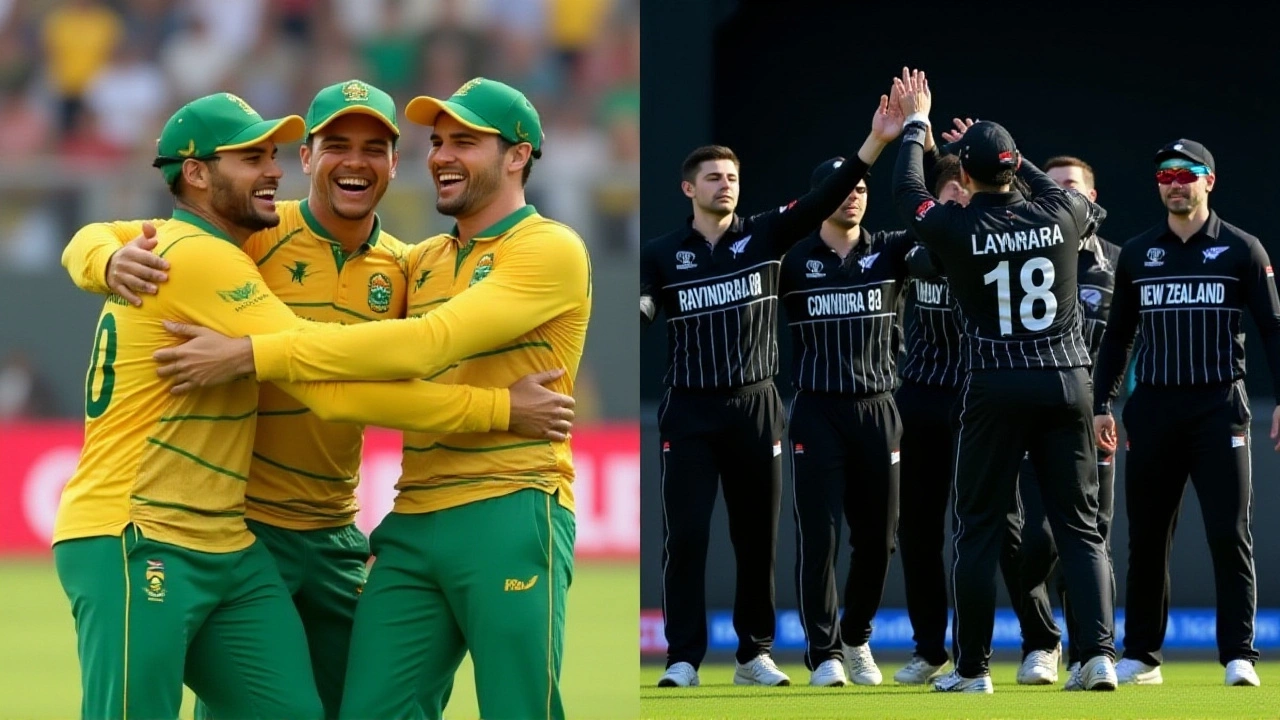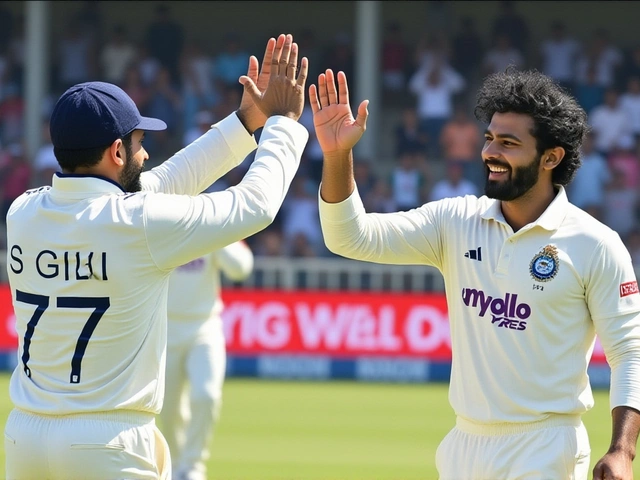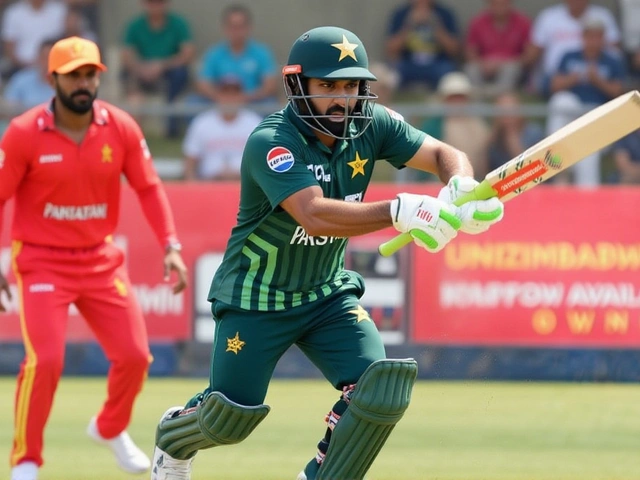
Australia dismantled the West Indies by 159 runs in the first Test of the 2025 Frank Worrell Trophy at Kensington Oval, Bridgetown, on June 25, 2025 — a performance defined by relentless pace bowling, costly fielding errors, and a batting collapse that left the hosts shell-shocked. The win wasn’t just about runs; it was about discipline. While Australia’s top order stumbled early, their bowlers, led by Josh Hazlewood and Mitchell Starc, turned the match on its head. West Indies, chasing 301, crumbled from 47/1 to 86/8 — and the drops? Seven of them. Five came off Shamar Joseph’s bowling alone. This wasn’t bad luck. It was a season of missed chances catching up.
From Ashes to Dust: Australia’s First Innings Struggle
Australia won the toss and batted first, but their 180 all out in 56.5 overs looked more like a survival act than a statement. Travis Head’s 59 off 78 balls was the only bright spot. The rest? Chaotic. Cameron Green out for a duck off one ball. Sam Konstas, the young opener, gone for 2. Josh Inglis, the middle-order hope, trapped leg before for 12. By the time Usman Khawaja fell for 44 — a fiery, six-laden cameo — Australia were 111/4. The innings barely held together, but it was enough. Why? Because West Indies’ attack, led by Jayden Seales’ 5/60, looked more dangerous than they were. Seales’ figures were impressive, but the runs came at a cost. The visitors didn’t dominate. They just survived.
West Indies’ First Innings: A False Sense of Security
When West Indies replied with 190, it felt like momentum had shifted. Shai Hope, the veteran, battled through 91 balls for 48. But the collapse came fast. Four wickets fell for 45 runs — Kraigg Brathwaite gone in the first over, then John Campbell and Brandon King in the same over. Roston Chase followed minutes later. It was a textbook example of how fragile Test batting can be. Mitchell Starc, the master of swing and seam, picked up 3 wickets, but the real story was the missed chances. Usman Khawaja was dropped twice on the first day — once on 12, another on 29. Both came off Joseph’s bowling. West Indies didn’t just fail to take catches; they failed to *believe* they could.
Australia’s Second Innings: The Quiet Storm
On Day 3, Australia’s 310/8 declared didn’t feel like a statement — until you looked at the scoreboard. Alex Carey’s 65 off 75 balls was calm, controlled, and crucial. He didn’t blaze. He built. And when he fell, it was to Joseph — who, by now, had become the story. The 24-year-old took 5/87 in the second innings, his third five-wicket haul in Tests. But here’s the twist: Joseph’s heroics were almost irrelevant. Because Australia’s pace trio — Starc, Hazlewood, and Pat Cummins — had already done the heavy lifting. Combined, they took 7 wickets across both innings. No one else in the Australian attack needed to carry the load. The Big Three? Still the engine room.

The Collapse: When 47/1 Became 86/8
West Indies began their chase with hope. 47/1 after 14 overs. Then, the dam broke. Keacy Carty, caught behind. Shai Hope, caught at slip. Alzarri Joseph, lbw. Jomel Warrican, bowled. And then — the drop. Usman Khawaja was dropped on 107/4 on the morning of Day 3. It was a simple chance, low and to the left of the wicketkeeper. It was missed. Three overs later, Australia was 114/4. The match was slipping away. By 86/8, the crowd was silent. The only spark? Shamar Joseph, smashing 44 off 22 balls — a blistering cameo that felt like a farewell. But when he was last man out, caught by Nathan Lyon at mid-off, the innings was over. 141 all out. In 33.4 overs. The lowest total in a Test chase at Kensington since 2003.
Fielding Failures That Changed the Match
Seven drops. That’s the number. Four in the first innings. Three in the second. Five of them came off Shamar Joseph’s deliveries — the same bowler who took 9 wickets in the match. It’s not just poor technique. It’s mental fatigue. West Indies’ fielders were chasing shadows. They didn’t trust their hands. They didn’t trust their eyes. And in Test cricket, where margins are measured in inches, that’s fatal. Khawaja was dropped twice on Day 1. Head was dropped on Day 3. One of those catches, if taken, could’ve ended Australia’s second innings at 200. Instead, they added 110 more runs. The math is brutal: 7 drops = roughly 120 extra runs. That’s the difference between winning and losing.
Brathwaite’s Century and the Weight of History
Kraigg Brathwaite played his 100th Test match — a milestone rarely reached in this era. He walked out to a standing ovation. He made 12 runs before falling early. The crowd cheered. The scoreboard didn’t. It was symbolic. Brathwaite represents the old guard — the last of a generation that once ruled the Caribbean. But the new one? It’s not ready. Not yet. The West Indies team that took the field in Barbados didn’t look like a side ready to challenge. They looked like a side still learning how to win.

What’s Next? The Series and the Stakes
Australia now leads 1-0 and sits atop the World Test Championship table with 12 points. West Indies? Zero. The next Test starts July 3 in Jamaica. But the real story? The T20I series that follows. West Indies, despite this loss, showed flashes of power-hitting. In the lone T20I preview, they posted 189/8 — and Australia chased it down with 190/7 in 18.5 overs. That’s a team with talent. But without discipline, without focus, without taking the catches they’re given — talent won’t save them.
Why This Matters Beyond the Scoreboard
This wasn’t just a Test match. It was a referendum. On West Indies’ ability to compete at the highest level. On Australia’s resilience after a shaky start. On the growing gap between the old cricketing powers and the ones trying to climb back. The Frank Worrell Trophy — named after the man who unified West Indies cricket in the 1960s — now carries a heavier burden. It’s not just about rivalry. It’s about legacy. And on this day, Australia didn’t just win. They reminded the world why they’re still the benchmark.
Frequently Asked Questions
How did Josh Hazlewood’s performance impact the match outcome?
Josh Hazlewood took 5/43 in West Indies’ second innings — the decisive spell that crushed any hope of a chase. His ability to swing the ball late, combined with pinpoint line, accounted for key batsmen like Shai Hope and Alzarri Joseph. His 5-wicket haul was his 17th in Test cricket, and he bowled 12 overs without conceding a single boundary in the final 6 overs. That pressure forced errors, and West Indies’ fielding didn’t help.
Why did West Indies drop so many catches, and who was most affected?
West Indies dropped seven catches — five off Shamar Joseph’s bowling. Usman Khawaja was dropped twice on Day 1, and Travis Head was missed on Day 3 when Australia were 107/4. These weren’t difficult chances. The fielders — especially the slip cordon — appeared hesitant, likely due to pressure or fatigue. Joseph, despite taking 9 wickets, was the biggest victim. His deliveries were often edged, but the catches weren’t taken, allowing Australia to build a match-winning total.
What does this result mean for the World Test Championship standings?
Australia earned 12 points for the win, moving them firmly into the top three of the WTC table. West Indies received zero points, putting them at risk of missing the 2025 WTC Final. With only six Tests left in the cycle, this loss is a major setback. Australia now lead the series 1-0, and with their pace attack firing, they’re strong favorites to retain the Frank Worrell Trophy.
How did Shamar Joseph’s all-round performance compare to other all-rounders in Test cricket?
Shamar Joseph’s 9-wicket haul and 44-run knock made him the first West Indian since 2017 to record a five-wicket haul and a 40+ score in the same Test. Only 12 players in Test history have achieved 9+ wickets and a 40+ score in a single match. But his efforts were wasted due to poor support. His 44 came at a strike rate of 200 — a rare display of aggression from a tailender. Still, without fielding support, even great performances can be rendered meaningless.
Is this a sign of West Indies’ decline or just a bad day?
It’s both. West Indies have talent — Joseph, Hope, and even the young pace bowlers show promise. But consistency is missing. Fielding lapses, poor shot selection under pressure, and a lack of mental toughness in chase situations are recurring themes. This wasn’t just a bad day. It was the latest chapter in a decade-long struggle to regain Test dominance. They need structure, not just stars.
What’s the historical significance of the Frank Worrell Trophy?
Named after the first Black captain of the West Indies, Frank Worrell, the trophy symbolizes unity, dignity, and excellence in cricket. First contested in 1960–61, it’s one of the oldest bilateral Test series. Australia has won 13 of the 20 series played. This 2025 victory extends their dominance, but the rivalry remains one of cricket’s most emotionally charged — not just for the players, but for the fans who remember the golden era of Caribbean cricket.



